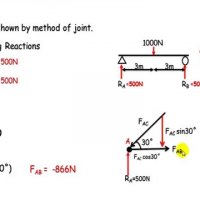A Potpourri of Investment Information: Analysis

Part III: A Potpourri of Investment Information
Chapter 20 - Analysis
Capital Gainz provides all the numbers you need for analysis, and even presents them in graphical form with the Capital Gainz Graphics Program. The variety of calculations, reports, and graphs available will help you keep on top of your portfolio's performance. The goal of this chapter is to point out what Capital Gainz offers for analysis. For specific information and advice, you should consult other sources, such as the business section of your local newspaper, investment books, investment newsletters, and financial advisors.
20.1 Discrepancies
20.1.1 Open Shares Rounding
===>>> The Open Shares Log and Open Shares Detail Report calculate each purchase's gain or loss. However, the total gain or loss is calculated by multiplying the total number of open shares by the current price, and subtracting the total basis amount. Because of rounding, this total may not be the same as summing the gain or loss of all the individual records.
20.1.2 Average Selling Method
===>>> You are likely to see rounding whenever you use the averaging selling method. When you sell the shares, the average price is used as the basis price. However, when this price is multiplied by the number of shares, the resulting amount is rounded to the nearest cent. Thus, the purchase amount subtracted for the shares sold may alter the basis price of the remaining shares. Likewise, the open basis price for the shares sold may differ from the basis price displayed before the sale. However, any difference is insignificant, and the underlying purchase amounts are kept consistent.
20.1.3 Local Security Precisions
In the Local Security Form, you can specify share number and price precisions for a local security. Check the statements from your broker or mutual fund company and see what precisions they use, so your totals and their totals will match. These precision entries are especially helpful when you record purchases, sales, and distributions, because the figures calculated by Capital Gainz will match the actual figures without modification if you defined them correctly.
20.1.4 Mutual Fund Total Return
It's difficult to get an exact match between the total return calculated by Capital Gainz and the total return calculated by your mutual fund company. The beginning and ending dates and prices must match, as do all distribution amounts and reinvestment prices. Usually, these figures are available from fund literature mailed to you. Even then, the mutual fund company may use greater precision in their calculations. In any case, the total return figure reported by Capital Gainz should be very close to the figure reported by the mutual fund company.
20.2 Open Shares Gain/Loss
The first step in analysis should be checking the gain/loss on your open shares. You can see these figures in the Local Security Table, the Portfolio Table, the Portfolio Summary Report, the Portfolio Detail Report, the Activity Summary Report, and the Open Shares Detail Report.
- gain/loss = (open_shares_value - open_shares_basis - open_shares_comm)
- open_shares_value = (open_shares * current_price)
- open_shares_basis (average) = open_shares * average_price
- open_shares_basis (cost) = open_shares_amount
The price for the average method is derived from the open totals maintained in the local security record:
local_sec_open_amt
average_price = ---------------------
local_sec_open_shares20.2.1 Example - Open Shares Gain/Loss
For example, say you made the following purchases:
100 shares at $10 each, for $1000, with a $30 commission
100 shares at $9 each, for $900, with a $30 commissionThe current price is now $11.00. Your current, unrealized gain would be:
gain = ((200 * $11) - ($1000 + $900) - ($30 + $30)) = $240If the current price was $9.50, your current, unrealized loss would be:
loss = ((200 * $9.5) - ($1000 + $900) - ($30 + $30)) = -$6020.2.2 Security Cost/Value Graph
The Security Cost/Value Graph, described in Chapter 19, displays cost and value bars for each local security in the specified portfolio. The cost corresponds to the open_shares_basis above, and the value corresponds to the open_shares_value above. This chart lets you easily determine which securities are doing well and which are doing poorly.
20.2.3 Open Shares Gain/Loss Percentage
The gain/loss percentage for open shares, assuming you don't include commissions in the basis, is calculated with:
open_shares_gain_loss
--------------------------- * 100
open_shares_basisIf you include commissions in the basis:
open_shares_gain_loss
------------------------------------ * 100
open_shares_basis + open_shares_comm20.2.4 Example - Open Shares Gain/Loss Percentage
Using the previous examples, these are the gain/loss percentages:
$240/$1900 = 12.63% gain
-$60/$1900 = -3.16% lossIf commissions were included in the basis:
$240/$1960 = 12.24% gain
-$60/$1960 = -3.06% loss20.2.5 Broker/Investment Company Performance
You can choose to subtotal the Portfolio Detail Report by broker/investment company. This feature is useful for comparing performance if you rely on a broker or investment advisor for advice. These comparisons will indicate both the best stock and the best investment type recommendations.
Also, you can use the subtotals to compare the performance of different mutual fund groups, or investment companies. However, to have a fair comparison, you should hold similar security types in each mutual fund group.
20.3 Closed Shares Gain/Loss
Closed share performance is available from the Activity Summary Report, the Closed Shares Detail Report, and the Open Information for Shares Sold Report. This figure will tell you if you've been slow to cut your losses, or quick to realize your gains.
- closed_shares_amount = (number_of_shares_sold * selling_price)
- open_shares_basis (average) = open_shares * average_price
- open_shares_basis (cost) = open_shares_amount
- gain/loss = (closed_shares_amount - open_shares_basis - closed_shares_comm - open_shares_comm)
For the Schedule D-1 Report, the gain/loss calculation results in the same values as above. However, intermediate values printed in the report deserve some explanation here:
- sales price = closed_shares_amount
- cost = open_shares_basis + open_shares_comm + closed_shares_comm
- gain/loss = sales_price - cost
The result is identical to the previous calculation:
gain_loss = sales_price - cost
= closed_shares_amount - (open_shares_basis + open_shares_comm + closed_shares_comm)
= closed_shares_amount - open_shares_basis - closed_shares_comm - open_shares_comm20.3.1 Example - Closed Shares Gain/Loss
For example, say you executed the following sale:
Sell 200 shares at $11.00 with a $45 commission.
The shares were purchased in two 100 share lots:
- 100 shares at $10 each, for $1000, with a $30 commission
- 100 shares at $9 each, for $900, with a $30 commission
The realized gain on the sale would be:
gain = ((200 * $11) - ($1000 + $900) - ($45) - ($30 + $30)) = $195If you executed the sale at $9.50 instead, the realized loss would be:
loss = ((200 * $9.5) - ($1000 + $900) - ($45) - ($30 + $30)) = - $105On Schedule D-1, the sales price is:
- sales price = (200 * $11) = $2200
- or sales price = (200 * $9.5) = $1900
and the cost is:
cost = ($1000 + $900) - ($45) - ($30 + $30) = $200520.3.2 Closed Shares Gain/Loss Percentage
The gain/loss percentage for closed shares, assuming you don't include commissions in the basis, is calculated with:
closed_shares_gain_loss
----------------------------- * 100
open_shares_basisIf you include commissions in the basis:
closed_shares_gain_loss
--------------------------------------------------------- * 100
open_shares_basis + open_shares_comm + closed_shares_comm20.3.3 Example - Closed Shares Gain/Loss Percentage
Using the previous example, these are the gain/loss percentages not including commissions:
$195/$1900 = 10.26% gain
-$105/$1900 = -5.53% lossIf commissions were included in the basis:
$195/$2005 = 9.73% gain
-$105/$2005 = -5.24% loss20.3.4 Closed Shares Gain/Loss - Over Period
On the bottom part the Activity Summary Report, the closed shares gain/loss is calculated over the specified period. The difference between this value and the normal closed shares gain/loss is that purchases made before the specified beginning date use the following basis:
open_shares_basis = open_shares * begin_priceThis results in a gain/loss figure completely attributable to the specified period.
20.4 Average Price
The average price calculation for the shares purchased is:
open_shares_basis
average price = ---------------------
number_of_open_sharesThis is a weighted average, telling you the average price that you paid for shares of the security.
The average price calculation for the shares sold is:
sold_shares_amount
average price = ---------------------
number_of_sold_sharesAgain, this is a weighted average, telling you the average price that you realized on shares of the security.
20.4.1 Monthly Average Price
In the Price History Table and Report, the monthly average price is calculated by first averaging the prices in each month, then averaging each month's average price. This accounts for a varying number of entries in a month.
sum(prices_in_month)
month average = --------------------
number_of_prices
sum(month_average)
monthly average price = ------------------
number_of_months20.4.2 Average Price - Example
Say you've recorded the following purchases:
1/ 1/91 Buy 100 shares at $9, for $900
1/15/91 Record price of $7
2/ 1/91 Buy 200 shares at $8, for $1600
2/15/91 Record price of $10
2/20/91 Record price of $12
3/ 1/91 Buy 100 shares at $10, for $1000
average purchase price = ($900 + $1600 + $1000)/(100 + 200 + 100) = $8.75
1/91 average: ($9 + $7)/2 = $8
2/91 average: ($8 + $10 + $12)/3 = $10
3/91 average: ($10)/1 = $10
monthly average price = ($8 + $10 + $10)/3 = $9.33
20.5 Current Yield
Current yield refers to the simple annual percentage you can expect from a given security. Some securities don't pay out dividends or interest, and thus have a current yield of 0%. Only dividends/interest are used, even though most mutual funds also regularly make capital gains distributions. Capital gains distributions are erratic, rendering any calculations based on them meaningless.
The current yearly dividend/interest payout for a security is calculated as the number of payouts per year multiplied by the the last per share payout.
(dividends_per_year * last_dividend_per_share)
yield = ---------------------------------------------- * 100
last_price_per_shareCurrent yield is usually more important for bonds or large company mutual funds and stocks, where price appreciation is a secondary consideration. For growth or small company mutual funds and stocks, other performance figures, such as total return, are more important than current yield.
Note that current yield is really a measure of expected return. That's why Capital Gainz takes the last dividend/interest distribution per share and multiplies it by the number of expected dividend/interest payouts. An alternative is to sum all dividend/interest distributions over the last year.
20.5.1 Example - Current Yield
Say you own 100 shares of a security that distributes dividends quarterly. A $76.00 dividend payment translates into $0.76 per share. Multiply by four, since the dividend is quarterly, and you have a $3.04 per share annual dividend. If the shares are trading at $45.00 each, then the current yield is 6.76%.
(4 * .76) 3.04
----------- * 100 = ----- * 100 = 6.76%
45.00 45.0020.5.2 Distribution Per Share
The distribution per share figure is the dividend rate for stocks. Most mutual fund statements include a per share value on the statement declaring the amount of the distribution. If the mutual fund company does not include the per share figure, you can let Capital Gainz calculate it in the Distribution Form. The calculated value should be very close to the actual value. There are two slightly different ways to calculate this figure, depending on the type of security. For most stocks and stock mutual funds, use the following:
distr_amount
distr_per_share = -------------
shares_ownedHowever, many cash securities and income or bond mutual funds factor in shares held for partial distribution periods:
- shares_entire: Shares held for the entire distribution period = number of shares
- shares_partial: Shares held for part of the distribution period
(distr_date - purchase_date)
= shares * ----------------------------
365/div_per_year
distr_amount
distr_per_share = -------------------------------
shares_entire + shares_partialCapital Gainz currently assumes any security paying dividends monthly (dividends per year = 12) uses partial dividend periods. Other securities are assumed not to. The difference is not very significant, and only applies to the default per share value calculated in the Distribution Form.
20.5.3 Example - Distribution Per Share
Assume the following activity for a mutual fund that pays quarterly dividends:
1/01/92 Own 100 shares
1/15/91 Buy 10.00 shares
1/31/91 Dividend of $45.87The dividend per share is calculated with:
distr_amount 45.87
distr_per_share = ------------- = ------ = 0.417
shares_owned 110.00However, for a money market mutual fund that pays monthly dividends, the dividend per share is calculated with:
shares_entire = 100.00
(1/31/91 - 1/15/91)
shares partial = 10.00 * -------------------- = 5.33
365/12
45.87
distr_per_share = -------------- = 0.435
100.00 + 5.3320.6 Total Return
===>>> The total return calculation, shown on the Activity Summary Report, shows how a particular security fared over a specified period. This figure represents a buy-and-hold strategy, which may or may not be equivalent to the performance that you realize. Total return is calculated by scanning the Price History File for prices and distributions per share. Distributions are assumed to be reinvested.
The actual calculation is:
- begin_shares = 1.00
- end_shares = 1.00 + shares_bought
- shares_bought = sum(distr_per_share/reinvestment_price)
- begin_value = begin_shares * begin_price
- end_value = end_shares * end_price
(end_value - begin_value)
total return = ------------------------- * 100
begin_valueWhen comparing the performance of securities, it's important to compare 'like' periods. For instance, comparing the return of Mutual Fund A from 1988-1991 to Mutual Fund B from 1985-1988 unfairly penalizes Mutual Fund B, since there was a severe market correction in 1987. If these are the only periods data is available for these two funds, no reliable comparison can be made.
20.6.1 Total Return Rate
To compare the total return figure to a fixed, compounded investment, an annual rate is also calculated. This rate assumes simple, yearly compounding of interest, and is calculated by:
- begin_date = date of first price found within date range
- end_date = date of last price found within date range
(end_date - begin_date)
years = -----------------------
365
end_value 1
rate = ( ----------- ^ ----- - 1 ) * 100
begin_value years20.6.2 Example - Total Return
For example, say Carolina Power and Light (CPL) had this data for 1/ 1/90 through 12/31/91 (in a dividend reinvestment plan):
begin_shares = 1.00
end_shares = 1.00 + shares_bought
begin_price = 47.228 on 1/ 3/90
end_price = 52.625 on 12/27/91
shares_bought = .1387
( 2/ 2/90: ((1.0000 + .0000) * .73)/43.637 = .0167
5/ 2/90: ((1.0000 + .0167) * .73)/43.695 = .0170
8/ 6/90: ((1.0167 + .0170) * .73)/43.651 = .0173
11/ 5/90: ((1.0337 + .0173) * .73)/43.318 = .0177
2/ 1/91: ((1.0510 + .0177) * .76)/45.292 = .0179
5/ 2/91: ((1.0687 + .0179) * .76)/48.058 = .0172
8/ 1/91: ((1.0866 + .0172) * .76)/47.420 = .0177
11/ 1/91: ((1.1038 + .0177) * .76)/49.625 = .0172
Total: .1387)
begin_value = 1.00 * .47.228 = 47.228
end_value = (1.00 + .1387) * 52.625 = 59.924
years = 2
(59.924 - 47.228)
total return = ----------------- * 100 = 26.88%
47.228
59.924 1
rate = ( --------- ^ --- - 1 ) * 100 = 12.64%
47.228 2So to beat the performance of CPL over the two years, you would have needed a fixed income investment yielding better than 12.64%.
20.6.3 Total Return Graph
The Total Return Graph in the Capital Gainz Graphics Program visually illustrates total return. This area graph shows the total return of a security over time, with the price and distribution components broken down into separate areas. For a description of this graph, refer to Chapter 19.
20.7 Performance
===>>> The Activity Summary Report processes all of your activity in a security to come up with a figure showing your performance. If you had purchased shares at the beginning of the period, and then just held them to the end of the period, then this calculation will be the same as the total return figure for the security. However, if you purchased more shares over the period, or sold shares over the period, then your actual performance will be better or worse than the total return of the security over the period.
This performance calculation is complex. The goal is to measure in-flow and out-flow of dollars to arrive at how much money you would have made, or lost, if you liquidated the account. Unlike all other calculations in Capital Gainz, this figure adds back open shares amounts that you sold later. It's like taking a snapshot of your portfolio at the beginning and ending of the period: if you sold shares after the specified end date, they are still considered to be open at the specified end date.
There are five components to your performance:
- Your initial holdings as of the specified begin date. This includes shares purchased before the begin date and not sold as of the begin date.
- Your buy activity over the period. This includes all purchases between the begin and end dates, regardless of whether or not you sold the shares later.
- The distributions you received, and fees you paid, over the period.
- Your selling activity over the period.
- Your holdings as of the specified end date. This includes shares purchased before the end date and not sold as of the end date.
These figures are then combined, resulting in a figure representing your overall performance:
- begin_price = first price found after begin date
- initial_value = open shares at begin date * begin_price
- end_price = last price found before end date
- end_value = open shares at end * end_price
- sell_amt = total amount of sales over the period
- sell_comm = total selling commissions over the period
- buy_amt = total purchase amount over the period
- buy_comm = total purchase commissions over the period
- distributions = total dividends, interest, and capital gains received over the period
- fees = total fees paid over the period
(end_value)
+ (sell_amt - sell_comm)
+ (distributions - fees)
- (initial_value + buy_amt + buy_comm)
---------------------------------------
= total_period_return = performance20.7.1 Performance Return and Rate
The return calculated for Performance uses annualized purchase amounts.
To account for partial periods:
- factor = days_not_owned/period_days
- adjustment = sum(purchase multiplied by factor)
For distribution reinvestment:
- net_buy_amt = buy_amt - distributions (distributions reinvested)
- net_buy_amt = buy_amt (distributions not reinvested)
total_period_return
return = ----------------------------------------- * 100
initial_value + net_buy_amt - adjustmentor, if you included commissions in the basis:
total_period_return
--------------------------------------------------------------- * 100
initial_value + net_buy_amt + buy_comm + sell_comm - adjustmentbegin_value = initial_value + net_buy_amt - adjustment
end_value = begin_value + total_period_return
end_value 1
rate = ( ----------- ^ ----- - 1 ) * 100
begin_value years20.7.2 Example - Performance
Let's look at an example using the Twentieth Century Vista mutual fund between 1/ 1/90 and 12/31/91:
begin_price = 8.51 on 1/08/90
initial_value = 307.99
end_price = 11.93 on 12/27/91
end_value = 1339.56
sell_amt = 510.00
sell_comm = 0.00
buy_amt = 1200.00
buy_comm = 0.00
distributions = 0.00
fees = 10.00
(1339.56)
+ (510.00)
+ (-10.00)
- (307.99 + 1200.00)
----------------------
= 331.57 = performancenet_buy_amt = 1200.00
adjustment = 963.77
331.57
return = -------------------------- * 100 = 60.93%
307.99 + 1200.00 - 963.77begin_value = 307.99 + 1200.00 - 963.77 = 544.22
end_value = begin_value + 331.57 = 875.79
875.79 1
rate = ( --------- ^ --- - 1 ) * 100 = 26.86%
544.22 220.7.3 Example - Adjustments
Calculating the adjustment to annualize partial period holdings is somewhat complex. Here's selected purchase information for the Twentieth Century Vista example, which used a date range of 1/ 1/90 to 12/31/91:
...
9/ 7/89 Buy 5.834 shares at $8.57 for $50.00
(Sold on 8/ 6/90)
...
4/ 9/90 Buy 6.010 shares at $8.32 for $50.00
(Sold on 8/ 6/90)
...
6/ 7/90 Buy 5.495 shares at $9.10 for $50.00
...The 9/ 7/89 purchase is after the first date of 1/ 1/90, so it's treated as:
9/ 7/89 Buy 5.834 shares at $8.51 for $49.65The $8.51 price is the first price in the specified range. The adjustment is:
49.65 * (512/730) = 34.82The specified range is two years, or 730 days, and this purchase was only held from 1/ 1/90 to 8/ 6/90, a period of 218 days. (730 - 218 = 512 days not held.)
The 4/ 9/90 purchase is after the first date, and the adjustment is:
50.00 * (610/730) = 41.78This purchase was only held from 4/ 9/90 to 8/ 6/90, a period of 120 days.
Finally, the adjustment for the 6/ 7/90 purchase is:
50.00 * (157/730) = 10.75This purchase was held from 6/ 7/90 to the 12/31/91 ending date, a period of 573 days.
The sum of the adjustments on purchases from 8/ 07/89 to 12/ 9/91 is 963.77. This adjustment is subtracted from the divisor when determining return percentage.
Commissions on purchases during the period are also adjusted.
20.7.4 Interpreting Performance
Any calculation that annualizes amounts understates potential fluctuation, as well as risk. For instance, if you purchase 10 shares of a security at $10 at the beginning of the year, 10 more shares at $5 in the middle of the year, and the security is worth $10 at the end of the year:
- Return: $200 - ($100 + $50) = $50
- Return%: $50/($100 + ($50 - ($50 * .5))) = 40%
However, had you invested all $150 at the beginning, you would have 0 return.
The rate of return calculated by Capital Gainz results in figures very close to the Internal Rate of Return. In fact, a sample of 18 securities showed the two rates to be within 1% of each other 17 times, and the 18th case showed only a 1.5% difference.
20.7.5 Performance Graph
The Performance Graph in the Capital Gainz Graphics Program illustrates the relationship between the various factors that contribute toward your performance. Two equivalent pie charts are displayed. The first pie chart shows the end_value, sell_amt - sell_comm, and distributions - fees. The second pie chart shows the initial_value, buy_amt + buy_comm, and the return. The return pie piece is exploded from the chart. For more information, see Chapter 19.
20.8 Total Return vs Performance
===>>> Since the total return figure represents a buy-and-hold strategy, you can compare it to whatever strategy you used over the period. If you used dollar-cost averaging, then see if that worked better than a buy-and-hold approach. For example, the total return for Twentieth Century Vista from 1/1/90 to 12/31/90, was 40.19%, with a yearly rate of 18.40%. We saw in the performance example that our performance during that same period resulted in a return of 60.93%, with a yearly rate of 26.86%. Thus, the timing of purchases and sales allowed us to do better than if we invested everything at the beginning of the period.
If your actual performance was under par, but the total return is good, then you've adversely affected your performance through poor timing. The security is a good-performer, and should probably be held. This effect is common for dollar-cost averaging strategies employed over a short period in a rising market.
If your performance was good, but the total return is under par, then you've managed to increase returns through good market-timing. While a buy-and-hold strategy would not have done well, the market- timing effects of your purchases and sales made this security a winner. This effect is common for dollar-cost averaging strategies employed over a long period in a fluctuating market.
===>>> Overall, total return is probably the most revealing of the two figures, especially for mutual funds. It clearly shows whether a fund performed well or not, regardless of any attempt at market timing. In Performance, unsuccessful market timing can hide good fund performance, and successful market timing can hide poor fund performance.
20.9 Price History
Price history allows you to quickly view a security's prices for given intervals. Distributions over the period are shown to help you account for price dips, since, for example, a $10 stock should fall to $9 after a $1 dividend.
The high/low prices and dates, monthly average price, and distributions per share over the period are given at the end of the report. The individual high and low prices are flagged with an H or an L. The monthly average price calculation was discussed earlier.
20.9.1 Example - Price History
Generally, you'd like to see a steady or gradually increasing price for income producing securities. Here's a year's worth of prices for Carolina Power and Light, an income-oriented utility stock:
Date Price Distribution/share
H 12/27/91 $52.6250
11/27/91 $49.6250
11/01/91 DIV $0.7600
9/28/91 $49.1250
8/31/91 $47.3750
8/01/91 $47.4200
8/01/91 DIV $0.7600
7/27/91 $47.0000
6/29/91 $45.6250
6/01/91 $46.2500
5/02/91 $48.0580
5/02/91 DIV $0.7600
3/30/91 $47.5000
3/21/91 $47.2500
3/18/91 $47.8070
3/04/91 $47.2420
L 2/01/91 $45.2920
2/01/91 DIV $0.7600
1/02/91 $46.6520
High: $52.6250 on 12/27/91 Monthly Avg : $47.8266
Low: $45.2920 on 2/01/91 Distribution: $3.8000For growth securities, you'd like to see more of a general up-trend to make up for the lack of regular dividends.
20.9.2 Price Graphs
You can generate line graphs representing security prices using the Price Graphs option in the Capital Gainz Graphics Program. The graphs are drawn on a grid, with prices and dates labeled on the axis. Additional lines are drawn for the average, standard deviation, and best-fit. You can also graph two securities at one time. The first security's prices are listed on the left vertical axis, and the second's on the right vertical axis. By overlaying the two price lines, and scaling the prices accordingly, you can compare the two price trends. These graphs are described in detail in Chapter 19.
20.10 Portfolio Allocation
The Portfolio Allocation Report gives you a quick look at how your investment dollars are spread out. Thus, you can see if you're being conservative or risky, and weigh this against your feeling on where the market's headed.
Determining factors for your portfolio's weightings include how much cash you need, how old you are, and your bullishness or bearishness on the market. One rule of thumb is: the shorter term your needs are, the more conservative you should be. If you are older and will soon need the cash for retirement, a market downturn would be catastrophic for an aggressive growth-oriented portfolio. However, this same market downturn would be unwelcome, but not devastating, to a young investor. This younger investor has time on his side, and will have many chances to recoup any losses and ride the market back up.
20.10.1 Example - Portfolio Allocation
Here's an example of a moderately aggressive portfolio:
------------------------------------------------------------
Local Security Value Pct
------------------------------------------------------------
FPDLI Fin Prog Daily Income $14,372.76 28.17%
PFZ Pfizer Inc. $6,308.81 12.36%
CPL Carolina Power & Light $6,240.85 12.23%
FPTXF Fin Progress Tax Free $5,082.13 9.96%
NUVNC Nuveen NC Tax Free Trust $4,838.26 9.48%
GRACE W.R. Grace $3,848.53 7.54%
FPINC Fin. Prog. Industrial Inc $3,034.27 5.95%
PSNC Public Srvc Co of NC $2,808.68 5.50%
KRG The Kroger Co $1,806.82 3.54%
FPEUR Fin. Prog. European $1,348.78 2.64%
VISTA 20th Century Vista $1,339.56 2.63%
------------------------------------------------------------
Security Type Value Pct
------------------------------------------------------------
LCS Large Company Stock $18,205.01 35.68%
MMF Money Market Fund $14,372.76 28.17%
TFBF Tax Free Bond Fund $9,920.39 19.44%
LCSF Large Company Stock Fund $3,034.27 5.95%
SCS Small Company Stock $2,808.68 5.50%
FSF Foreign Stock Fund $1,348.78 2.64%
SCSF Small Company Stock Fund $1,339.56 2.63%
------------------------------------------------------------
Security Class Value Pct
------------------------------------------------------------
Stock $21,013.69 41.18%
Cash $14,372.76 28.17%
Bond Fund $9,920.39 19.44%
Stock Fund $5,722.61 11.21%
Total $51,029.45 100.00%More than 40% of the portfolio is in stock holdings, 28% is in cash, and the rest is in stock and bond mutual funds.
20.10.2 Portfolio Allocation Graph
The Portfolio Allocation Graph in the Capital Gainz Graphics Program shows three different pie charts representing your portfolio. The first pie chart breaks down your holdings by security class, the second pie chart by security type, and the last pie chart by security. The largest part is exploded from each chart. The Portfolio Allocation Graph is described in Chapter 19.






























